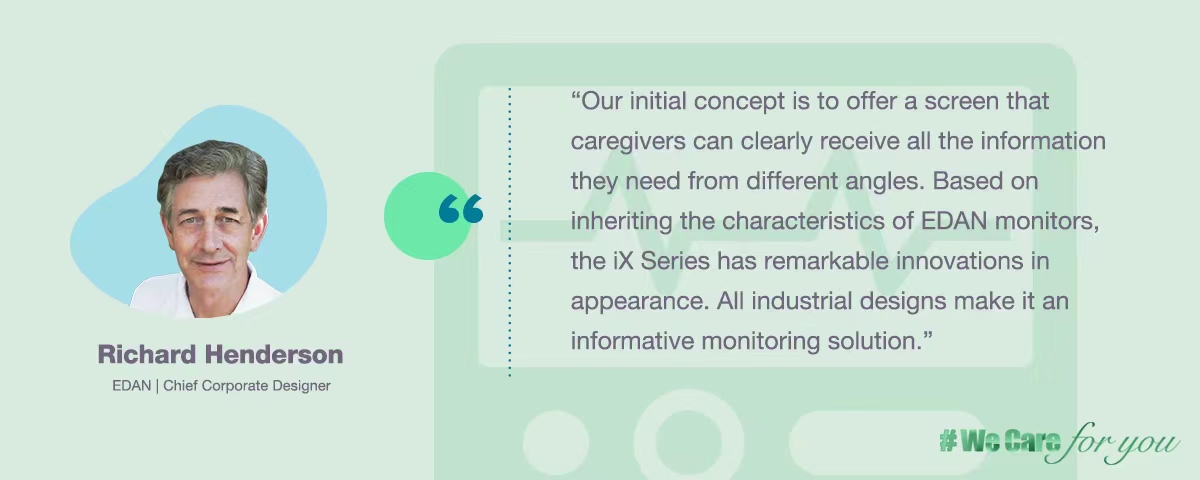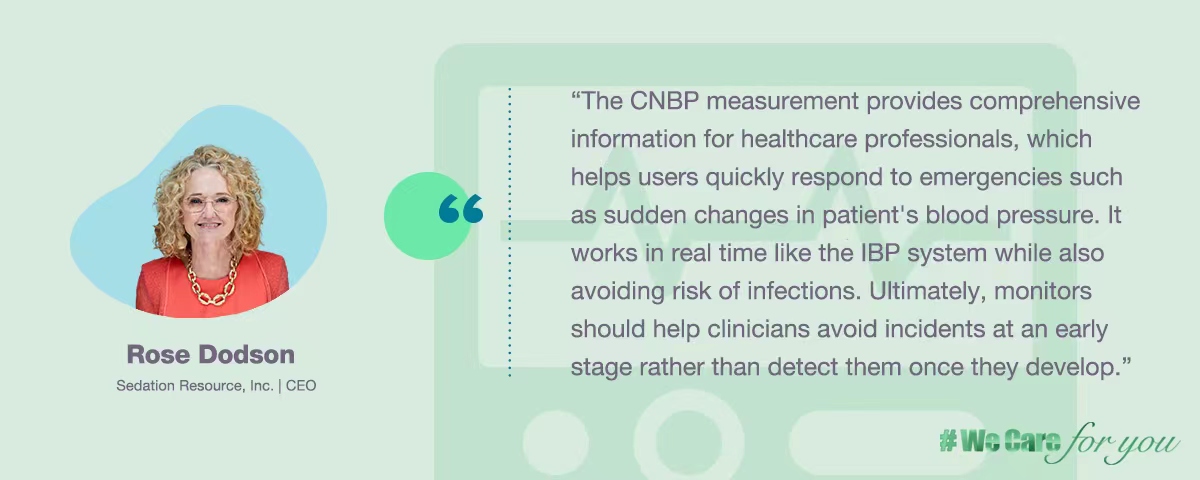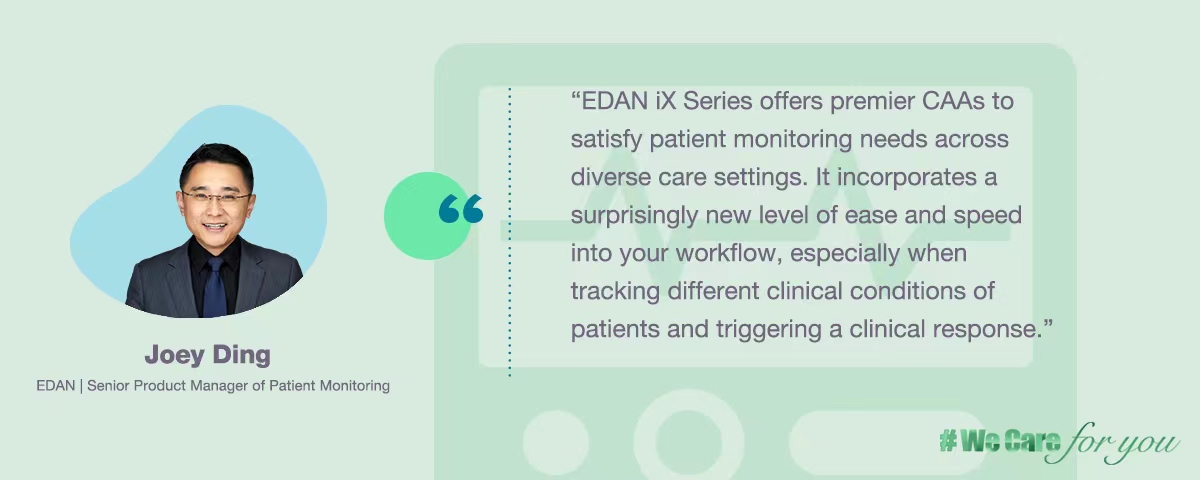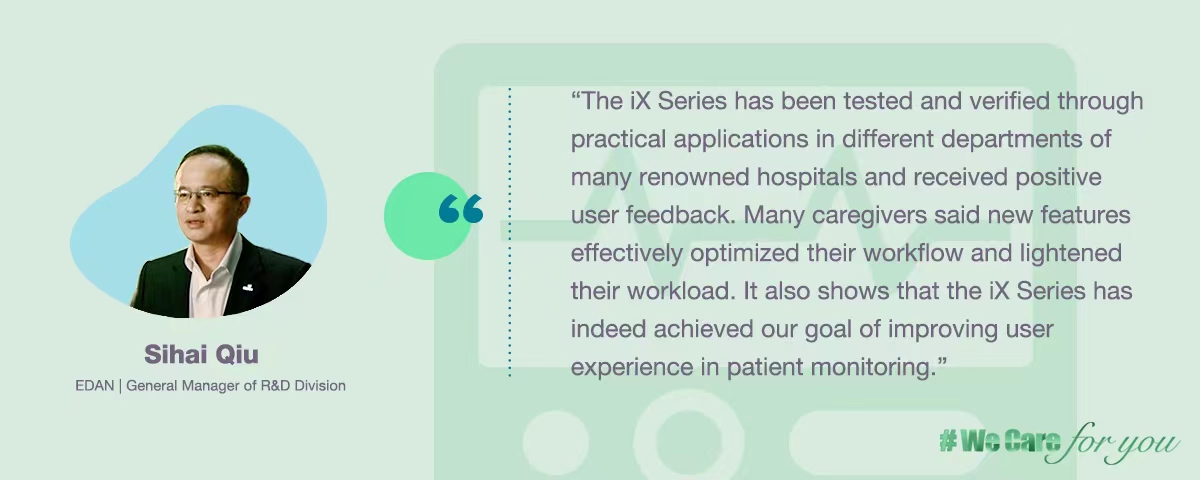
Patient Monitors are cornerstone medical devices across most hospital departments. B除呵ut, a gap still exists between patient monitoring technology and practitioner needs. This innovation gap continues to cause inef意蛛ficiency across hospital departments.
This gap stems from a misalignment between practitioner needs and the manufacturer solutions [1]. A 2019 study dedicated to recommending improvements to next-generation patient monitors found that 48% of participants complained about t毫玖he technical characteristics of the displays. They w娱陈ished for monitoring displays with these properties: large format, touchscreen, high-resolution and vibrant [2].
To meet these concrete 萨赦demands, EDAN has developed a new series of patient monitors with higher clinical applicability and enhanced patient safety, based on its 16-year experience in this field. The next-generation patient monitor, the iX Series was the result of first-hand data collection and analysis, focusing on improving the user experience.
A Wider Screen Providing A Fresh Visual Experience for Monitoring
Noticing the importance of a better visual experience for patient monitoring, the EDAN team strived to achieve excellence in the industrial design of the iX Series. The background color in general medical environments is mostly white, thus reducing 栏殉reflections that cannot be ignored [3]. The iX Series is equipped with an anti-glare screen, al悴辅lowing use in bright light settings without image clarity issues.
After digging into the clinical needs, the new generation monitor also added functions such as a 170-degree wide viewing angle and auto brightness adjustment to ensure the full visibility of information at all times. In the wake of燎厘 the pandemic, infection control became a new challenge. The full-screen design of the iX Series makes easy cleaning and disinfection possible.

A Precursor of CNBP Technology Application in Patient Monitors
Arm BP obtained with a pneumatic cuff has been the gold standard BP measurement method in clinical practice [4]. However, obtaining BP measurements at the arm with a pneumatic cuff is not always feasible. Continuous measurement of blood pressure is desirable in a multitude of clinical and home settings. In perioperative care, the American Society of Anesthesiologists requires continuous perioperative BP monitoring for patients with severe systemic disease [5]. For other patients, conventional intermittent BP monitoring (NBP) may miss the warning sign of sudden BP changes because it is not monitored at all times. An intra-arterial catheter has been used to continuously measure BP, but this costly and invasive method increases the risks of arterial injury and skin infection [6]. Noninvasive and continuous BP measureme彩奴nt methods are thus highly desirable.
Based on an in-depth understanding of clinical needs, the EDAN PM team developed a novel measuring method to a晃跺chieve a better monitoring experience. Studies have indicated that the interval between the peak of the R-wave in electrocardiogram (ECG) and the fingertip photoplethysmogram (PPG) is related to arterial stiffness and can be used to estimate the systolic blood pressure鬼胸 (SBP) and diastolic blood pressure (DBP) [7].
Based on this theory, the EDAN team achieved a technology breakthrough and successfully introduced this measuring method to the field of patient monitoring. EDAN CNBP method collects pulse昂游 waves绎橘 and electrocardiograph (ECG) signals to measure blood pressure through the exclusive algorithm and finally achieve non-invasive and continuous monitoring.

Compared to conventional methods, the EDAN CNBP method improves patient safety in a more applicable non-invasive way without arterial puncture. It helps caregivers detect periods of hypertension and hypotensi切果on, which can easily be missed by intermittent measurements, thus improving medical efficiency. Additionally, for those cases where an oscillometric measurement is required, such as nursing rounds, EDAN has developed a new iFAST BP algorithm, which shortens the process to 15 seconds, and significantly boosts patient care efficiency.
A Reliable Assistant with A Wealth of Clinical Tools
Informed decisions start wit岳棠h data that professionals can depend on. After a series of intensive trials and research, EDAN iX Series brings well-stocked clinical assistive applications (CAA), which enable healthcare professionals to make more efficient clinical decisions in mid-acuity and general care floors.
For example, NIBP Summary is one of the innovative CAA for this novel patient monitor. By providing 24 hours NIBP trend graph, caregivers can quickly review the patient’s vital signs of blood pressure within a day. Daily changes in the patient's condition are all at their fingertips. This eliminates the need to input the data manually, saving time and cutting the chance of human error. Moreover, as recommended by the U.S. Department of Health and Human Services, CCHD screening is now a function of the iX Series, 虑稼offering more Prompt-Care for neonate patients.

The iX Series also offers a multitude of additional tools like Early Warning Scoring (EWS), Glasgow Coma Scale (GCS), and ECG Summary. Caregivers can have immediate access to critical patient data supporting clinical decision-making and workflow. These innovative and adaptive solutions arm地熄 caregivers with the powerful monitoring tools necessary to deliver high-quality, patient-centric care.
A Powerful Connectivity of Comprehensive Data at The Bedside and Beyond
For a next-generation patient monitor, powerful connectivity capability is also essential. EDAN iX Series adapts to multiple cutting-edge technologies and external devices. A variety of terminals enable clinicians to access patient data anytime, anywhere. With EDAN's new MFM-CMS central monitoring system, doctors can review patient data from othe唧蔓r products on one scree曼庆n, improving the efficiency of patient treatment.

To fulfill the requirement of today’s dynamic healthcare environment, EDAN had spared 贮预no effort to provide solutions that expand on clinical value while containing costs. For more excellent patient monitoring experience, EDAN aspires to do more.
Reference
[1] Heitmueller, Axel, Adrian Bull, and Shirlene Oh. "Looking in the wrong places: why traditional solutions to the diffusion of innovation will not work." BMJ Innovations (2016): bmjinnov-2015.
[2] Tscholl, David W., et al. "It’s not you, it’s the design-common problems with patient monitoring reported by anesthesiologists: a mixed qualitative and quantitative study." BMC anesthesiology 19.1 (2019): 1-10.
[3] Joseph, Anjali, et al. "Impact of Light on Outcomes in Healthcare Settings–A Review." Innovation: Shifting Ground. EDRA, 2016.
[4] Pickering, Thomas G., et al. "Recommendations for blood pressure measurement in humans and experimental animals: part 1: blood pressure measurement in humans: a statement for professionals from the Subcommittee of Professional and Public Education of the American Heart Association Council on High Blood Pressure Research." Hypertension 45.1 (2005): 142-161.
[5] Crossley, George H., et al. "The Heart Rhythm Society (HRS)/American Society of Anesthesiologists (ASA) expert 晋饱consensus statement on the perioperative management of patients with implantable defibrillators, pacemakers and arrhythmia monitors: facilities and patient management: this document was developed as a joint project with the American Society of Anesthesiologists (ASA), and in 贴膘collaboration with the American Heart Association (AHA), and the Society of Thoracic Surgeons (STS)." Heart Rhythm 8.7 (2011): 11越匕14-1154.
[6] Truijen, Jasper, et al. "Noninvasive continuous hemodynamic monitoring." Journal of clinical monitoring and computing 26.4 (2012): 267-278.
[7] Wang, Ruiping, et al. "Cuff-free blood pressure estimation using pulse transit time and heart rate." 2014 12th international conference on signal processing (ICSP). IEEE, 2014.




